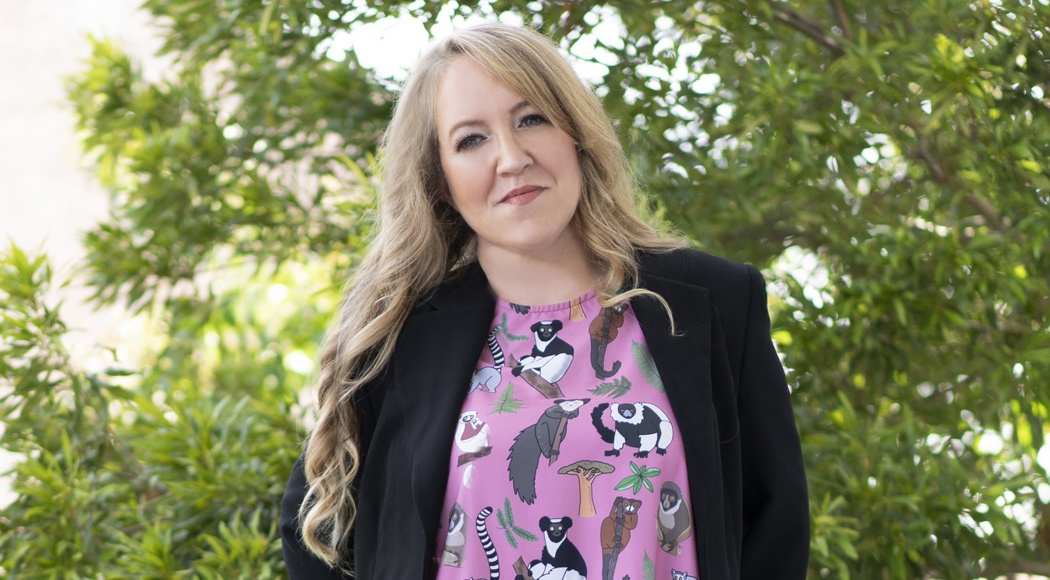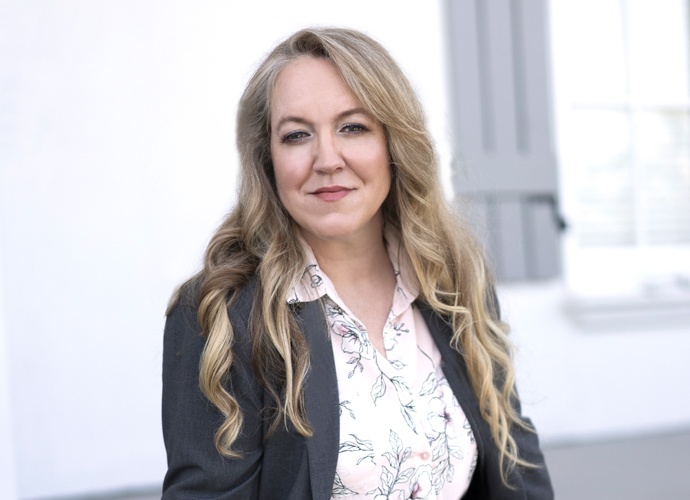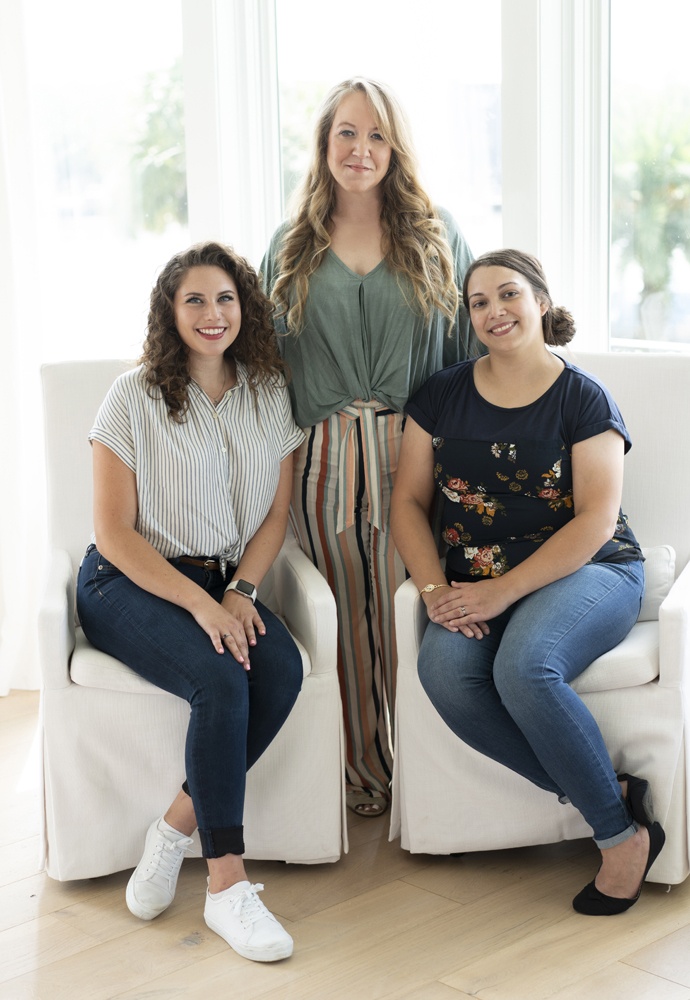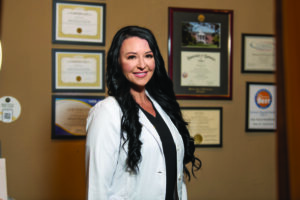AS DAWN BREAKS over Madagascar, the forest comes alive with wild, glowing eyes searching for the perfect place to bask in the sun before beginning the dance that dates back over 60 million years. Wails waft through the tamarind trees calling the troupe together for their morning forage. And as lemurs begin their daily ritual, halfway around the world Tina Aust dreams of largely impacting their welfare, if not their very survival, right here on the Northshore.
From their intriguing, song-like calls to wide-eyed gazes and playful curiosity, lemurs have captured the hearts of many wildlife lovers. Their importance to the study of human genetics and their status as the world’s most endangered land mammal also make them extraordinary. Tina was introduced to humans’ oldest living primate relatives at the Los Angeles Zoo where she volunteered for five years. Despite other careers as a film producer and rape crisis counselor, once she started working with animals, she never stopped. Describing herself as a New Orleanian who happened to be born in California, Tina moved here permanently in 2015. “While visiting in 2006 I saw the spirit of the people here amidst the devastation of Katrina. People who had nothing were willing to give others the shirt off their back. This is home.”
Tina became a zookeeper at the Audubon Zoo and connected with four other ladies who shared her passion for these exotic-looking prosimians. They now join her in acting to save them from extinction. The Louisiana Lemur Foundation began in 2016 with Tina as President/CEO; Jessica Deville, Director of Internal Affairs; Jamie Marks, Director of Research; Melissa Passman, Animal Management Director; and Samantha Zarin, Outreach Director. “We strive to make a lasting impact for lemur conservation and set a positive example for our community by establishing an organization composed of dedicated and strong female leaders.”
That impact will be felt locally and worldwide, says Tina. “We’re part of the Lemur Conservation Network, which includes over 50 organizations working to save lemurs. We already have lemurs to be taken in by our facility but are still trying to procure the right piece of land.” While it’s illegal to own lemurs as pets in most states, five states still allow it. “The pet trade significantly threatens the species. They’re charming from afar, but terrible pets and not meant to live domestically. Those bred for sale suffer social and health issues, and buyers end up regretting their decision. Unfortunately, most zoos cannot accept former pet trade lemurs.” The only lemur specific rescue in the country is the Endangered Primate Foundation in Jacksonville, Florida. “They have limited space and are eagerly awaiting our help.”
The foundation’s main objective is to provide a much-needed rescue and rehabilitation center and outdoor classroom to educate about lemurs and wildlife conservation, along with contributing to lemur conservation efforts worldwide. Tina’s team is not only passionate, but also highly credentialed.
Jessica has a B.S. in Ecology, Evolution, and Environmental Science; Jamie is working on her Ph.D in Integrative Biology; Melissa has ten years of primate experience, and she is the senior primate keeper at the Audubon Zoo; and Samantha is working on her MBA. Citing lemurs’ soul-piercing, bright yellow eyes as inspiration, Jessica has meticulously documented the team’s mission saying, “Lemur conservation is what I’m meant to do with my life. When visitors step through our doors, we want them to feel transported to a safari in Madagascar and have a chance to respectfully observe these ‘wandering spirits’ in a habitat similar to their homeland. But that’s Phase 3, and we have much work to get there.”
Phase 1 consists of fundraising to purchase at least 15 acres of forested land to construct an aviary-style enclosure over large areas in which lemurs will have free roam. Phase 2 includes clearing areas for buildings and breaking ground on animal housing, a vet hospital, education building and offices. Once complete, permits and certifications will be obtained, and lemurs will be accepted. Phase 3 includes teaching former pets how to “be a lemur” through rehabilitation and, finally, opening the facility to guests for guided tours.
Tina requests patience during this process. “The whole plan is on our website, and as excited as we are to open, what’s best for the lemurs always come first. We’re flipping the scenario of lemurs in people’s homes to people visiting lemurs in their natural environment to enjoy and appreciate them responsibly. They’re not meant to sit on your shoulder or be touched, but encountered in their wild habitat. Once it’s healthy for them, we’ll open for guided tours. Guests will learn about lemur conservation and enjoy their journey through the rain forest.”
Stay-at-home orders have delayed fundraising, but Tina is committed to doing whatever it takes to raise awareness and contributions. “I have a lemur suit and I’m not afraid to wear it at schools and festivals – anything to promote outreach.” The enthusiastic leader asks for volunteers to help with marketing and events and encourages donations via their website. “Getting the land is our first priority and everything helps. We love Amazon’s SMILE program gifts and Facebook birthday fundraisers.”
Tina is calmly, confidently tenacious in the endeavor so dear to her heart. “Sharing space with these joyful animals has changed me. The connection is indescribable, and it’s my mission to help save them. The worldwide lemur conservation community needs us and is waiting for us to open and provide critical help – and I’m not going to stop until we do.”
For more information, visit louisianalemurs.org, email info@louisianalemurs.org or call 985-237-0863.










